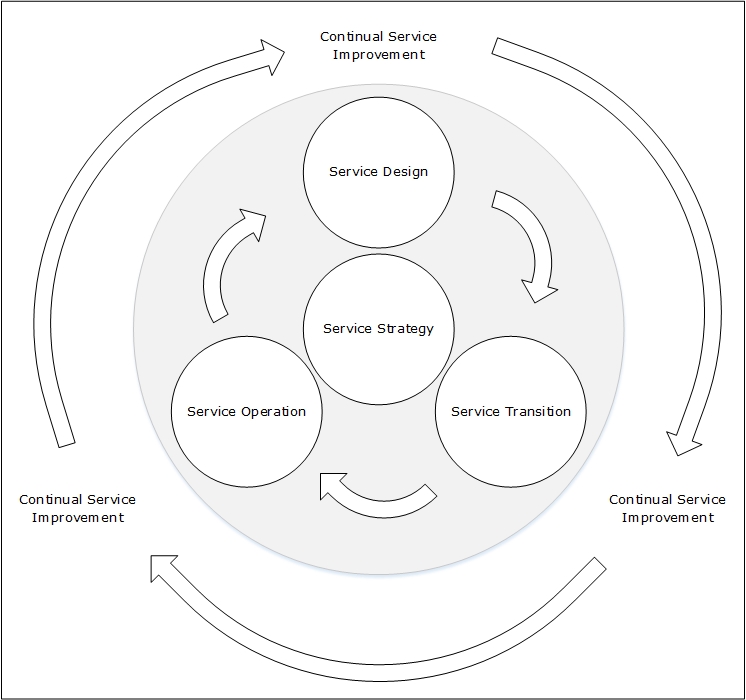Lean ITIL Service Operation
The IT Infrastructure Library (ITIL) is a set of pre-defined processes and common practices (I try to avoid the word “best practice” when talking about ITIL) for the IT service management (ITSM).
When I talk with customers about ITIL, they often complain about the overhead of ITSM processes, that were designed according to ITIL. I already wrote about this in one of my previous blog posts (Is lean ITSM a myth?). Companies mainly have three problems during the implementation and/ or operation of ITIL processes:
- slow processes
- complex processes
- error prone processes.
ITIL doesn’t tell you how to design a process. ITIL is a collection of common practices. Usually, you have someone that helps you to design and implement the processes and functions. If you don’t have an experienced consultant, you might get processes, that lead you to the wrong direction: Big, fat, complex, ugly, error prone processes.
At the end, your processes have to deliver value. But I saw so many crappy/ slow/ complex processes that doesn’t deliver any value, that I seriously began to doubt in ITIL. But again: ITIL isn’t slow, complex or error prone by default. The processes you design are slow, complex and error prone. The success of ITSM with ITIL is based on the processes that you design and implement.
The ITIL life cycle
The biggest difference between ITIL v2 and ITIL v3 is, that ITIL v3 focuses on the full life cycle of services, covering the entire IT organization.

Patrick Terlisten/ vcloudnine.de/ Creative Commons CC0
ITIL Service Operation
The ITIL Service Operation phase manages services in supported environments. The ITIL Service Operation volume describes the Service Operation phase as the part of the lifecycle, where the services and value is actually delivered to end-users and customers. The Service Operation phase is the only phase of the ITIL life cycle, that consists of process and functions.
| Process | Function |
|---|---|
| Event Management | Service Desk |
| Access Management | Technical Management |
| Request Fulfillment | Application Management |
| Problem Management | IT Operations Management |
| Incident Management |
When designing the processs and functions, it’s important to focus on the delivered value! Without this focus, you will never be able to develop your IT from manufactory to factory.
Value Stream Mapping
Value Stream Mapping is method for analyzing the current state, and designing the new state of a process. Knowledge about the current state is mandatory for the design of the future state. Value Stream Mapping is a well-known method in Lean Management, and it can be applied to any value chain. A value chain is a number of activities to deliver a valuable product or service to a customer.
Value Stream Mapping can be used to analyze ITIL Service Operation processes and functions for potential waste. With the knowledge about potential waste, processes and functions can be optimized.
The Lean Management/ Toyota Production System knows three types of waste:
- Mura (waste due to variation)
- Muri (waste due to overburdening)
- Muda (transportation, waiting, overproduction, defects, inventory, movement, extra processing)
I’m sure you can apply all three types of waste to ITIL Service Operation processes and functions. And because of this, methods and instruments known from the Lean Management can help to streamline ITIL Service Operation processes and functions.
Lean Managenent and ITIL
Lean Management offers a lot instruments and methods, that can be used together with the processes and functions of the ITIL Service Operation phase.
One of the greatest benefits is automation. Automate as much as you can. Kaizen (“improvement”) can be used as part of the Continuous Improvement of ITIL. Kanban can be used as part of the Service Desk, Incident or Problem Management. Problem-solving techniques, like A3, Kepner-Tregoe or 5W, can be used in the Problem and Incident Management processes. FMEA can be used for quality management as part of the Application, Technical and IT Operations Management. Total Productive Maintenance (TPM) can be used as part of the IT Operations Management. And there are many more possibilities to use methods and instruments of the Lean Management as part of the ITIL Service Operation Phase.
Summary
Every process may suffer from different types of waste. This can be due to bad design or bad execution. This can be a big problem in case of the processes and functions of the ITIL Service Operation, because these processes and functions actually deliver services to end-users and customers. To provide the best possible service quality, you need effective and valuable processes and functions. The Value Stream Mapping can help to analyze current processes. With the knowledge about the value-adding activites of the current processes, IT organizations are able to design valuable and waste-free processes and functions. Methods and instruments of the Lean Management can help to achieve this.
Lean ITIL Service Operation must be the goal!
